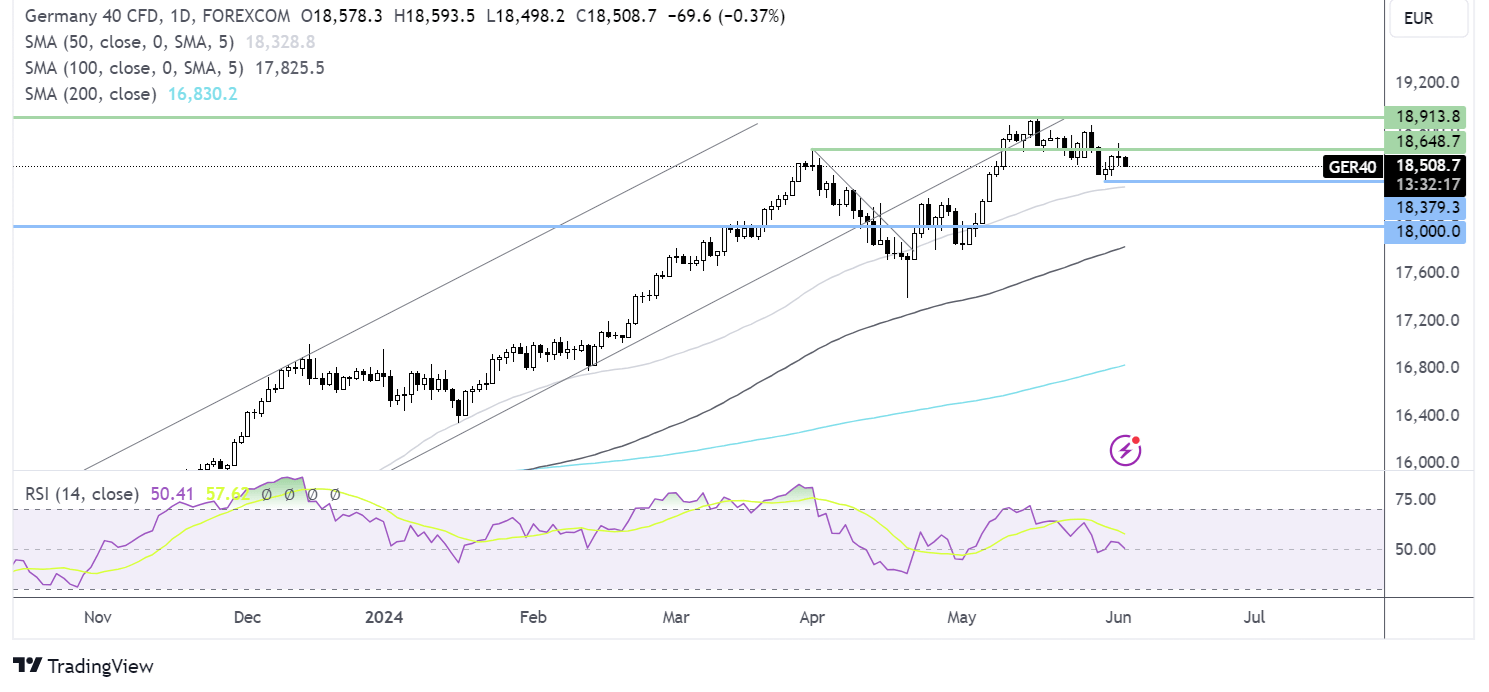
GBP/USD falls as the USD recovers ahead of factory orders & Job openings
- UK BRC retail sales are softer than expected
- US job openings & factory orders up next
- Buyers need a move above 1.28
GBP/USD is holding steady around 128, its highest level since mid-March, as it struggled to extend yesterday's gains further. The USD fell yesterday to a two-month low against its major peers after signs of weakness in the US economy fueled expectations that the Federal Reserve could cut interest rates sooner.
Yesterday's data showed that the US ISM manufacturing PMI contracted more than expected as orders dropped and production slowed. Construction also came in weaker than expected, indicating that monetary policy is restrictive and is acting as a brake on the economy.
The market now prices in a 59% probability of a rate cut in September, up from 50% last week.
Attention now turns to US factory orders and jolts job openings ahead of Friday's nonfarm payroll report, which will be the next key test.
Meanwhile, the pound is digesting weaker-than-expected industry retail sales data. Figures from the British Retail Consortium showed that retail sales rose 0.4% in May, recovering from a -4.4% decline in April. However, they were still short of the 1.2% forecast, indicating that the recovery is soft and consumers remain squeezed.
The data comes ahead of the Bank of England interest rate decision later this month, where the policymakers could provide clues about when the central bank will start to cut rates. After hotter-than-expected UK inflation data, expectations that the BoE could keep interest rates at the current level for a little bit longer could support the pound in the near term.
GBP/USD forecast -technical analysis
GBP/USD is attempting to break out of range, testing resistance at 1.28. A rise above here could give the bulls the upper hand.
Supported by yesterday’s bullish engulfing candle and the RSI above 50, buyers could look to extend gains to test 1.2860, the rising trendline resistance, and 1.2890, the 2024 high.
On the downside, a break below 1.27 exposes the 100 SMA at 1.2640, which is also a static support. Below here the 200 SMA comes into focus.

DAX struggles amid a cautious mood ahead of Thursday’s ECB meeting
- German unemployment is unchanged at 5.9%
- ECB is expected to cut rates this week
- DAX struggles below 18635 resistance
The DAX and its European peers kicked off Tuesday on the back foot, tracking losses in Asia, where major equities gave back some of the previous day's gains.
The DAX finished higher yesterday, amid signs that the downturn in the manufacturing sector could be slowing. Optimism that the ECB will cut rates when it meets on Thursday also supported the index, however there is some caution regarding the future path for rates beyond June.
Today, German unemployment figures showed that the rate held steady at 5.9% in May, although the unemployment change increased by 25,000, over double the 10,000 expected. Signs of a softening labor market could mean lower inflationary pressures from weaker wage growth, which we would be supportive of further ECB rate cuts.
The data comes after eurozone unemployment fell to a record low and negotiated wage growth rose by more than expected in Q1, which had raised some doubts over how aggressively the ECB would be able to cut interest rates after a June move.
Looking ahead to the US session, attention will be on factory orders and jolt job openings for further clues over the health of the US economy. Signs of weakness in the economy could feel bets of a Fed rate cut, which would boost risk sentiment.
DAX forecast - technical analysis
The DAX failed to close above the 18635 resistance yesterday, as its recovery from 18380 low appears to be struggling.
Sellers will look to push the price lower to retest the 18380 support and the 50 SMSA at 18330. A break below here creates a lower low, bringing the 18000 round number, into focus.
Buyers will need to rise above 18635-18700, to extend gains towards 18928 and fresh all time highs.







